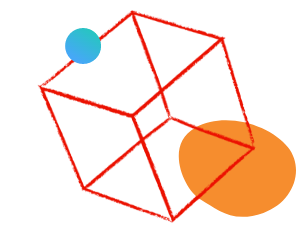Prop and conversion rate
- Mark as New
- Follow
- Mute
- Subscribe to RSS Feed
- Permalink
- Report
On our site, we have a prop (c5) for the entry page type (eg 'product page', 'search', 'home' etc..) and an evar (v5) collected at the same time. Evar5 expires on visit.
1. When I bring the prop (c5) as a row and the conversion rate as a metric, I am seeing some results which seem to make sense.
However, even if the numbers make sense-ish, my understanding is that the report is invalid as a conversion rate is a visit context metric, it could not be applied to a hit context (like a prop). Is that correct?
2. This brings my second question. If I use evar5 (allocation most recent: last / expire: after visit / enable merchandising : disabled) as a row, and bring in conversion rate as a metric, I am also getting some conversion rate data. My understanding is that this report would also be invalid because evar5 has enable merchandising set to disabled, therefore there is no way for Adobe to tie orders back to that specific entry page.
3. If I bring my evar5 (entry page type) as a row in a freeform table with page views as a metric, what is the report saying to me?
If I have a row that has "homepage" for evar5 (entry page type) and 1000 page views, is that saying that the homepage as an entry page had 1000 page views? OR that altogether there were 1000 page views generated when users started with the homepage (the 1000 page views would include all types of pages)
Thank you!
Solved! Go to Solution.
Views
Replies
Total Likes

- Mark as New
- Follow
- Mute
- Subscribe to RSS Feed
- Permalink
- Report
OK, so trying to do a conversion based on the first page is going to be a little more complex. As it sounds like both your prop and eVar are just set to page type.
Example:
- Page 1 (home)
- prop5 set to "home"
- Entry Prop5 set to "home" (as the first value in the visit to be set)
- eVar5 set to "home"
- Instance of eVar5 triggered
- Page 2 (search results)
- prop5 set to "results"
- Entry Prop5 set to "home" (as the first value in the visit to be set)
- eVar5 set to "results"
- Instance of eVar5 triggered
- Page 3 (product page)
- prop5 set to "product"
- Entry Prop5 set to "home" (as the first value in the visit to be set)
- eVar5 set to "product"
- Instance of eVar5 triggered
- Add to Cart Action (assuming you aren't setting either value explicitly on this action)
- prop5 not set / no value
- Entry Prop5 set to "home" (as the first value in the visit to be set)
- eVar5 not set, but value of "product" persists due to Visit expiry
- Instance of eVar5 not triggered (since the eVar wasn't explicitly set)
- Page 4 (Cart)
- prop5 set to "cart"
- Entry Prop5 set to "home" (as the first value in the visit to be set)
- eVar5 set to "cart"
- Instance of eVar5 triggered
- Page 5 (Checkout)
- prop5 set to "checkout"
- Entry Prop5 set to "home" (as the first value in the visit to be set)
- eVar5 set to "checkout"
- Instance of eVar5 triggered
- Purchase Complete Action
- prop5 not set / no value
- Entry Prop5 set to "home" (as the first value in the visit to be set)
- eVar5 not set, but value of "checkout" persists due to Visit expiry
- Instance of eVar5 not triggered (since the eVar wasn't explicitly set)
If you look at your Order metric directly against your prop, you won't have any value, since no value was set on the action... You should have the "Entry Prop5" value, as once set, this value persists for the entire visit. Your eVar, despite not being set, due to the Visit expiry will show the last set value, in this case your "checkout" page, but it's not the first page in the visit, so it won't get you what you need.
Now, if you use a breakdown of Entry Page Type and your Order, Visits and Orders/Visit metrics... you will also have a problem:
| Order | Visits | Orders/Visit | |
| Entry Page Type | 100 | 1000 | 10% |
| home | 20 | 800 | 2.5% |
| product | 80 | 200 | 40% |
Each row in this table will show the number of visits that has the entry page.. not the total visits to your site (I assume you want a breakdown of X% started from Page A, Y% started from Page B, etc... )
I am also not sure if you want to just look at Visits that had an order... so that those % add up to 100% (basically showing you a distribution of your orders against the entry page)?
To get "Total Visits with Orders", you will need a segment for:
Orders Exists
And a calculated metric for "Total Visits with Orders":
(You can see I have the segment as part of the calculated metric, and I made sure to set the visits to "Grand Total")
Now, you can use your breakdown of Entry Page Type with the Orders Metric, Total Visits with Orders, and a division of Orders/Total Visits with Orders
Views
Replies
Total Likes

- Mark as New
- Follow
- Mute
- Subscribe to RSS Feed
- Permalink
- Report
I'm trying to follow your usage so that I can better help you...
First off, how are you tracking your Prop5 and eVar5? While there is an "Entry Prop5" (which shows you the first value captured by the prop within a visit), Prop5 itself would not be an "Entry Page Type" on its own (unless you have some logic to only set once per visit).
It seems far more likely that Prop5 and eVar5 are just "Page Type" and are tracking on each page in your site, and you are using the "Entry" value to get your entry page type (which won't work for your eVar).
Next, I am not sure what kind of conversion rate you are trying to calculate? Are you trying to get something like:
"Orders / Visits that start on page type "product page" (or insert page type of your choice)"
Until I understand better your implementation, and what you are trying to do, I really can't provide detailed context to your questions....
Help me to help you.
Views
Replies
Total Likes
- Mark as New
- Follow
- Mute
- Subscribe to RSS Feed
- Permalink
- Report
Hello Jennifer,
Evar5 and Prop5 are capturing page type.
Both values are filled in with data on the first page of the visit.
In the config of Adobe, both are called "page type".
Regarding conversion rate, yes we are trying to get "Orders / Visits that start on page type "product page" (or insert page type of your choice)".
That is why i thought I could answer that question by bringing page type (prop or evar --- this is where I was confused) as a row and conversion rate (Orders/Visits) as a metric.
But then, as I was thinking that through, I thought that :
1/ a prop is at the hit level so you can not have conversion rate as a metric with a dimension that is based on a hit --- an assumption I had which @MandyGeorge corrected below.
2/ i thought to use the evar instead as a row , and conversion rate as a metric but in this case, i was confused too because my evar5 is not merchandising enabled so i could not understand how Adobe could tie back any orders to views of that particular evar.
And my last question was a bit unrelated.
It was on how to interpret a freeform report when you use an evar that expires at the Visit.
My evar5 (page type) fires only on the first page but it expires at the visit level.
So my understanding is that each page a user sees also carries the value of evar5, even if it is not set on the page.
So for example if a user does HOmepage (evar5 is set to Home) > product page A (evar5 is not set but it persists, with a value of "Home") > Product Page B (evar5 is not set but it persists, with a value of "Home"), and I build a report with evar5 in rows and PageViews as a metric, what should I see in front of the evar5='HOme'? Should I see "1" because there was only 1 view of evar5=Home or "3" (because of the persistence)?
Views
Replies
Total Likes

- Mark as New
- Follow
- Mute
- Subscribe to RSS Feed
- Permalink
- Report
OK, so trying to do a conversion based on the first page is going to be a little more complex. As it sounds like both your prop and eVar are just set to page type.
Example:
- Page 1 (home)
- prop5 set to "home"
- Entry Prop5 set to "home" (as the first value in the visit to be set)
- eVar5 set to "home"
- Instance of eVar5 triggered
- Page 2 (search results)
- prop5 set to "results"
- Entry Prop5 set to "home" (as the first value in the visit to be set)
- eVar5 set to "results"
- Instance of eVar5 triggered
- Page 3 (product page)
- prop5 set to "product"
- Entry Prop5 set to "home" (as the first value in the visit to be set)
- eVar5 set to "product"
- Instance of eVar5 triggered
- Add to Cart Action (assuming you aren't setting either value explicitly on this action)
- prop5 not set / no value
- Entry Prop5 set to "home" (as the first value in the visit to be set)
- eVar5 not set, but value of "product" persists due to Visit expiry
- Instance of eVar5 not triggered (since the eVar wasn't explicitly set)
- Page 4 (Cart)
- prop5 set to "cart"
- Entry Prop5 set to "home" (as the first value in the visit to be set)
- eVar5 set to "cart"
- Instance of eVar5 triggered
- Page 5 (Checkout)
- prop5 set to "checkout"
- Entry Prop5 set to "home" (as the first value in the visit to be set)
- eVar5 set to "checkout"
- Instance of eVar5 triggered
- Purchase Complete Action
- prop5 not set / no value
- Entry Prop5 set to "home" (as the first value in the visit to be set)
- eVar5 not set, but value of "checkout" persists due to Visit expiry
- Instance of eVar5 not triggered (since the eVar wasn't explicitly set)
If you look at your Order metric directly against your prop, you won't have any value, since no value was set on the action... You should have the "Entry Prop5" value, as once set, this value persists for the entire visit. Your eVar, despite not being set, due to the Visit expiry will show the last set value, in this case your "checkout" page, but it's not the first page in the visit, so it won't get you what you need.
Now, if you use a breakdown of Entry Page Type and your Order, Visits and Orders/Visit metrics... you will also have a problem:
| Order | Visits | Orders/Visit | |
| Entry Page Type | 100 | 1000 | 10% |
| home | 20 | 800 | 2.5% |
| product | 80 | 200 | 40% |
Each row in this table will show the number of visits that has the entry page.. not the total visits to your site (I assume you want a breakdown of X% started from Page A, Y% started from Page B, etc... )
I am also not sure if you want to just look at Visits that had an order... so that those % add up to 100% (basically showing you a distribution of your orders against the entry page)?
To get "Total Visits with Orders", you will need a segment for:
Orders Exists
And a calculated metric for "Total Visits with Orders":
(You can see I have the segment as part of the calculated metric, and I made sure to set the visits to "Grand Total")
Now, you can use your breakdown of Entry Page Type with the Orders Metric, Total Visits with Orders, and a division of Orders/Total Visits with Orders
Views
Replies
Total Likes

- Mark as New
- Follow
- Mute
- Subscribe to RSS Feed
- Permalink
- Report
I should add, are you sure that your eVar5 only sets on the first page? Given it's called "Page Type" I suspect it's not limited to the first page...
If you are willing to share a URL (in a private message, so it's not public), I would be happy to take a look at your site and confirm the behaviour....
While it may be that is how your site it implemented, the naming convention doesn't indicate that, and it would be a very non-standard implementation... I am not saying that isn't the case, but I have concerns that the interpretation of what the eVar is doing is different...
Views
Replies
Total Likes

- Mark as New
- Follow
- Mute
- Subscribe to RSS Feed
- Permalink
- Report
I agree with Jen that we do need some more information to be certain. Is your evar5 a page type, the same as your prop5? And is it capturing the page type on each hit or is it capturing only one value per visit (the entry value)?
Props, in addition to their regular version, have entry and exit versions. The entry version captures the first value for that dimension in a visit. So if a customer enters your site and lands on the home page, that is the entry page type. The rest of the visit is going to remember that the first page type was home page.
If you're putting revenue against entry page what it's going to do is it will consider hits where revenue was generated and then find the first page type for that visit, and assign the revenue based on that value. So every hit in the visit has the same entry page value.
This is different than if you were just using the regular version of a prop, where every hit has a different value. The revenue would be attributed only to the page where it was generated, which is typically a checkout or order submit page. Which isn't very helpful.
An evar, similar to a prop can have different values on each hit. If you have page type with a last touch, on each hit that a new page type is generated it essentially overwrite the previous value when determining which to give credit to. Using revenue against this isn't necessarily invalid, but it isn't very useful, because it will return the page type where the order was placed, and not for the pages the rest of the visit.
One thing that you can do instead is to use a nondefault attribution model for your revenue. If you use something like linear or participation, it will spread out the revenue attribution amongst all of the pages seen in the visit.
For the last part of your question, keep in mind the entry page dimensions only exist for props and not for evars, so you wouldn't have an entry evar, unless you set one up specifically to capture only the first page of a visit and persist throughout the visit.
Assuming that isn't the case and that it's just a regular page type, seeing 1000 views would mean that the page value was seen or persisted for that many page views. If a new page type is being set on every hit and it's last touch, then it would be only the views for that actual page.
If it is an actual entry page you're capturing and persisting it would capture the number of page views where the page was seen and persisted through the rest of the visit.
Views
Replies
Total Likes
Views
Likes
Replies
Views
Like
Replies





